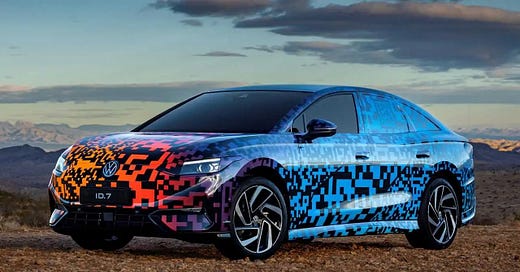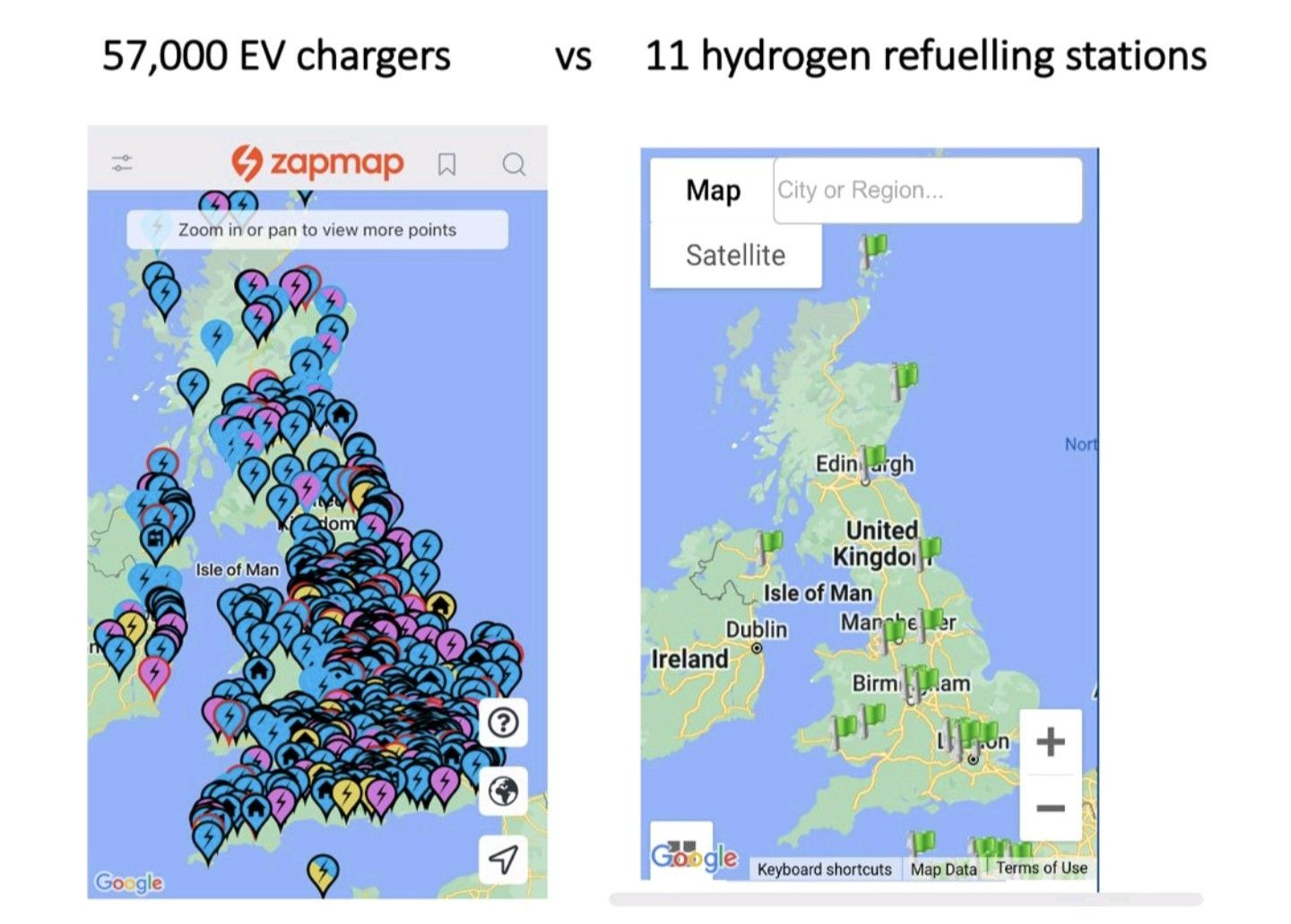My interest this week was piqued by a search I recently made, Volkswagen, hydrogen or battery?
I can’t remember why I included VW in the search, but as one of the biggest automotive manufacturers, their view on where propulsion is going is probably as good as anyones.
The search brought back a long list as you might expect. What was interesting was the clear shift away from hydrogen at the end of last year, 2022.
Encouraging headlines about patents and vehicles with a whopping 1,243 mile range have been replaced with more grounded statements about hydrogen having some big disadvantages compared with battery technology, and it no longer being for VW.
The first question I had about this u-turn was whether they were saying no to using hydrogen as a combustible fuel, filling up the tank at the gas station in similar fashion to today, or was this specifically about powering cars using a hydrogen fuel cell?
Toyota, even bigger than VW, have had a love affair with the hydrogen fuel cell since launching the Mirai in 2014 in Japan. They weren’t the first manufacturer to do so, but they’ve continued to invest in the technology, releasing a second generation Mirai which made the news recently, travelling 845 miles on one tank of hydrogen.
What exactly is the difference between a fuel cell and just using hydrogen as a combustible fuel?
Mad Max Fury Road
Back in the 1800s, hydrogen was preferred to petrol because it was less volatile. It was only when engineers added a carburettor to the engine to manage the fuel air mix better that hydrogen was finally replaced.
You need a lot more hydrogen to match the current carbon alternatives, which means a bigger fuel tank and less room for luggage and people. It also has to be stored as a liquid, which means keeping it extremely cold, requiring some serious tech in and around the tank. When ignited it also burns hotter which produces nitrogen oxide as a by-product, a gas which is not good for the environment or us. It’s a lot more expensive than traditional fossil fuel currently and there’s also the question of how it’s made in the first place. There are plenty of environmentally unfriendly ways to produce hydrogen right now which would also apply to a fuel cell.
Instead of relying on combustion to create energy, the fuel cell converts hydrogen and oxygen into water. The process of doing this produces electricity which powers the vehicle. It’s intriguing. The only outputs are electrical energy and water. Provided hydrogen and oxygen constantly flow into the cell, it will never die and electricity will continue to be produced.
The reason for VW’s u-turn and Toyota’s renewed interest in battery-powered electric vehicles (BEVs) is because of technological advances elsewhere, plus the usual cost and volume arguments.
The hydrogen fuel cell vehicle is expensive to produce which has dramatically restricted the numbers on the road. Consequently, hydrogen filling points at gas stations are not readily available, making their purchase even less attractive. In the UK, there are currently 11 hydrogen points versus 57,000 EV chargers.
Toyota recently announced a new square battery technology including solid-state variants which will charge in less than 10 minutes and have a range of 600 miles. These next generation batteries will be fitted in their BEVs from 2026 and they expect to have manufactured 1.7 million of them by 2030.
It’s these developments in battery technology which also has VW spokespeople confidently saying hydrogen is not for us, not yet anyway.
An interesting development which helps to confirm this shift is Prieto Battery in the US which incorporates a novel 3D design in their batteries. They recently announced a nonflammable lithium-ion prototype battery, which can operate at extremely low and high temperatures. They are also claiming it can fully charge in three minutes, faster than filling a traditional fossil fuel vehicle.
It’s this sort of speed which will solve the big objection that BEVs are impractical when we’re all forced to drive them.
Pogo, our Tesla Model Y, only takes 30 minutes to charge back-up to 80%. On a long drive I wish it sometimes took longer. Often I can still be finishing a cuppa, when a message pops up to move, with the threat of additional costs if I don’t vacate the charge point promptly. I’ve moved the car on several occasions.
If charging times are dramatically reduced, the pressure to add more and more super charging points starts to fall away.
In France over the last 9 months, nearly every service station we’ve had the pleasure of visiting has been playing catch-up, installing multiple super chargers for BEV owners of non-Teslas to match the ones already in place for Tesla drivers.
In the UK some Tesla supercharge centres have controversially opened up to the whole BEV community regardless of make. It hasn’t been well received because the short cables currently installed on a Tesla charger, mean some vehicles require two parking bays because the vehicle’s charge point is in a different location to the Tesla.
Toyota are still happy to play the long game on the hydrogen fuel cell. Could it still be the answer when hydrogen is finally produced in vast environmentally friendly quantities, something the oil companies will reluctantly have to focus on when governments finally insist that they stop digging up Texas Tea.
Perhaps there is a different type of fuel cell on the horizon? What if an alternative nuclear one was available, a cheap and efficient energy source with no carbon hangover, the only by-product being the demise of the oil industry?
Bristol University and Professor Tom Scott demonstrated a battery containing carbon-14 back in 2017. The diamond encased battery was able to produce a small current when placed in a radioactive field. Fitted to a car, it could extend the main battery’s range by taking care of some of the more manageable energy demands like climate control and lights.
A Californian start-up called Nano Diamond Battery has developed a nuclear battery which could last up to 28,000 years without recharging. It uses recycled nuclear waste and meets all current safety standards. A key part to its possible success is the lock-in system which prevents access to any of the radioactive material.
Profound technological breakthroughs more significant than refrigeration, internal combustion, flying or the internet are needed now if we’re to stop the wanton destruction of the human race.








